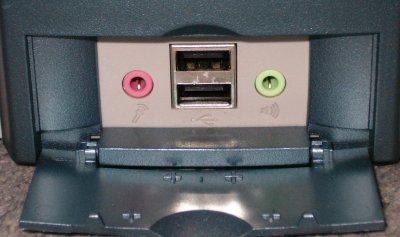Hardware

Getting it out of the box was a less apprehensive experience than with the UltraStation. The Platina ships in an attractively decorated box, padded well inside as you'd expect, adorned with small pictures of what the case looks like. It's not their standard beige chassis by any stretch and quite attractive from the top three quarter view, but it certainly could be better looking. Like I said in the UltraStation article, at this price point you'd really expect a bit more than a basic steel chassis. As it stands, the Platina is nearly identical to the UltraStation inside and only the front facia is different. That means effective cooling, no sharp steel edges, easy limited tool access to the parts, effective cable routing and only one case fan needed.
Click for image of the case innards (approx. 117KB)
One of my main criticisms of the UltraStation was the lack of available USB ports. The Platina still provides the single USB port with the card reader, but now supplies 2 ports along with useful front audio connectors for microphone and headphones under a pull down plastic cover at the very bottom of the case.

Combine that with 4 ports on the backplane and you have 7 usable USB ports, all 2.0 compatible, 4 at the back and 3 at the front. A single FireWire 400 port, provided by the ASUS motherboard, is joined by a single port on the Audigy 2 ZS's front panel. Time are keen to point out that customers of a Platina FX system, of the same spec as the review unit, will receive the correct black ZS front panel. They were out of stock of the correct facia, which slots into a spare 5.25" drive bay, at the time of shipping.

Click for image of the ATX backplane (approx. 30KB)
The Audigy panel provides a wide range of audio connectivity, including coax and Toslink digital input and outputs, microphone and auxiliary phono inputs, along with MIDI connectors and the infrared receiver for the remote control. The Audigy remote can obvious control all of the Audigy relevant features, such as switching inputs and controlling volume. It's also able to control Windows and your applications, albeit in a more limited fashion compared to something like ATI's RemoteWonder.









